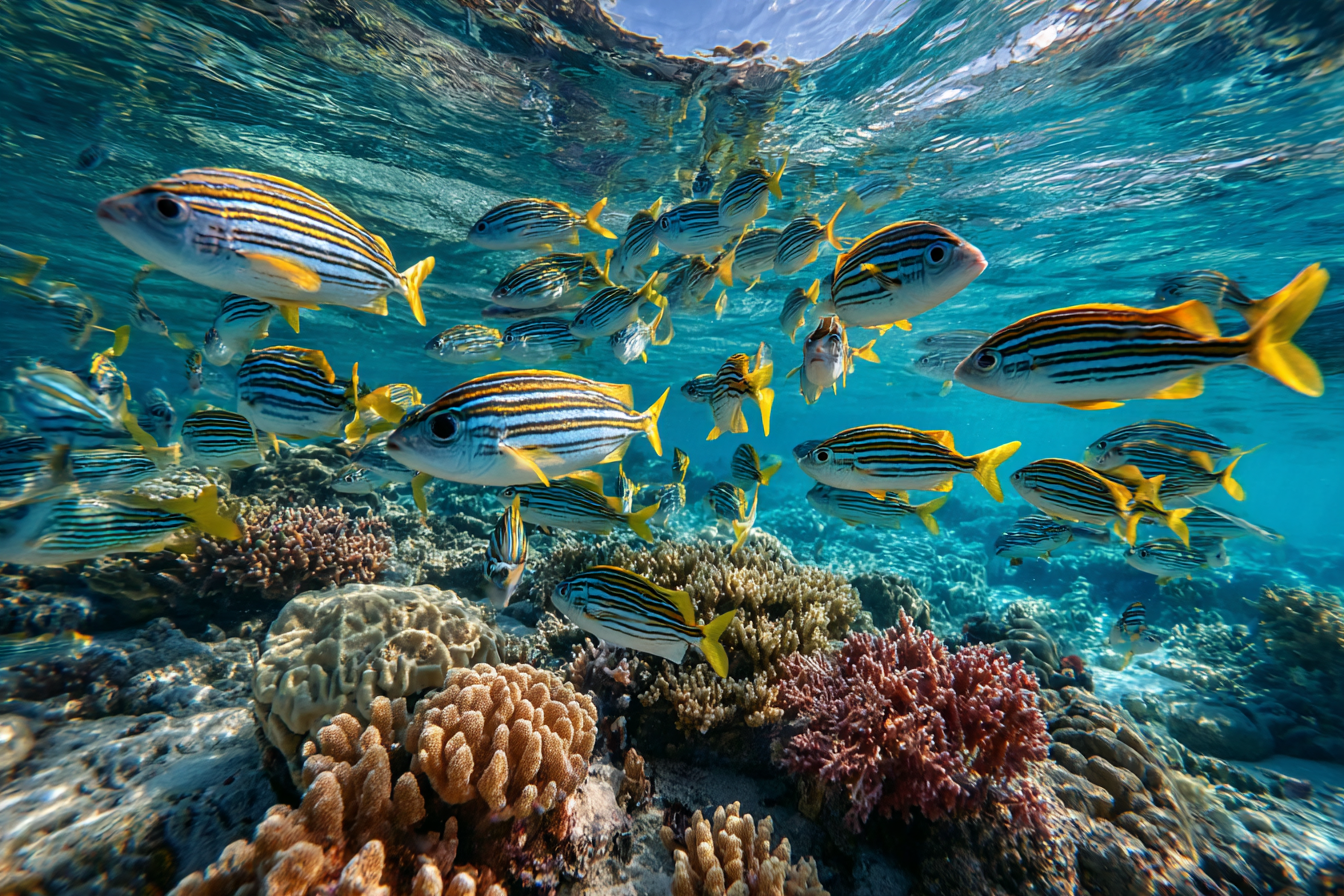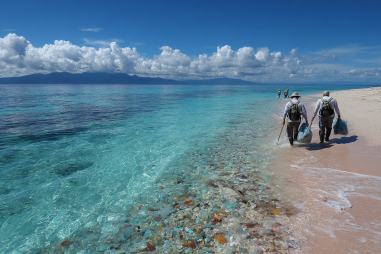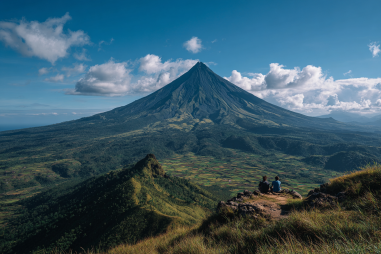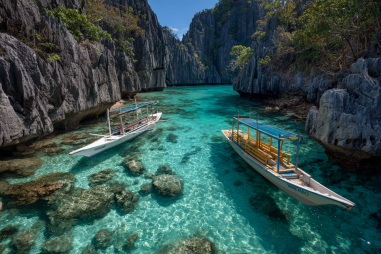Nestled in the pristine waters of the Philippines, Kalanggaman Island is not only a picturesque paradise known for its powdery white sandbars and crystal-clear waters but also a vibrant hub of marine biodiversity. Beneath its shimmering surface lies a captivating underwater world teeming with life, waiting to be explored by snorkelers and divers alike. This guide will help you uncover the rich marine habitats around Kalanggaman Island, introduce you to the fascinating creatures to expect beneath the waves, and provide insights on how to enjoy this vibrant ecosystem responsibly.
Marine Habitats Surrounding Kalanggaman Island
The marine environment around Kalanggaman Island is characterized by a diversity of habitats that support its rich aquatic life. The island is surrounded mainly by coral reefs and seagrass beds, both of which are vital ecosystems that nourish an array of marine organisms. The coral reefs serve as shelter and breeding grounds for numerous fish species, while seagrass beds are essential feeding areas for herbivorous creatures like sea turtles.
These habitats are found at varying depths, making them accessible for casual snorkelers around the shallow reefs and for more adventurous divers in the deeper waters. The clear visibility, often exceeding 20 meters, allows for excellent observation of these underwater communities and their interactions.
Common Tropical Fish Species
Swimming among the corals, you’ll find a dazzling variety of tropical fish that paint the underwater landscape with vibrant colors and patterns. Some of the most common species you can expect to encounter include:
- Clownfish: These small, orange-and-white striped fish often inhabit sea anemones and are a favorite among snorkeling enthusiasts.
- Parrotfish: Known for their bright blue and green hues, parrotfish play an important role in reef health by feeding on algae.
- Angelfish: With graceful fins and bold coloration, angelfish glide effortlessly across the coral formations.
- Butterflyfish: Recognizable by their distinct patterns and colors, they often swim in pairs or small schools.
- Damselfish: Small and lively, these fish defend their territories vigorously and add a splash of color to the reef.
Observing these fish in their natural habitat is a delightful experience that reveals the delicate balance of the marine ecosystem.
Coral Types and Their Significance
Kalanggaman Island’s reefs are home to a variety of corals, which form the foundation of the marine ecosystem here. The primary types of corals found include:
- Hard Corals: These stony corals build the reefs by secreting calcium carbonate, providing structure and shelter for many species.
- Soft Corals: More flexible and often colorful, these corals sway with the currents and offer habitat for smaller marine animals.
- Brain Corals: Named for their grooved surface that resembles a brain, these corals are important reef builders.
Corals are key to maintaining biodiversity by creating habitats that support fish, invertebrates, and other marine wildlife. Their health is vital not only for the underwater creatures but also for the island’s environment and tourism industry.
Other Marine Creatures of Interest
Apart from fish and corals, Kalanggaman’s waters are home to a variety of other fascinating marine life:
- Sea Turtles: These gentle giants occasionally patrol the reefs and seagrass beds. Spotting a green or hawksbill sea turtle is a special treat for visitors.
- Starfish: Colorful and varied, starfish cling to rocks and coral, moving slowly across the seafloor.
- Sea Urchins: Important for controlling algal growth on reefs, these spiny creatures are usually hidden but add to the underwater biodiversity.
- Crustaceans: Small crabs and shrimps often make their homes within the reef crevices, contributing to the reef’s intricate ecosystem.
- Moray Eels: These elusive predators can sometimes be seen peering from holes in the reef at dusk or dawn.
Encountering this variety of marine life underlines the ecological richness and complexity of Kalanggaman’s waters.
Marine Life Behavior and Best Viewing Practices
Understanding the behaviors of marine creatures can enhance your underwater experience and ensure you observe them without disturbance. Many fish are curious but also cautious; sudden movements or loud noises can frighten them away. Sea turtles, while generally gentle, are sensitive and should be approached slowly and at a respectful distance.
Best practices include:
- Moving slowly and calmly while snorkeling or diving to avoid startling the wildlife.
- Observing creatures quietly without chasing or touching them.
- Maintaining a safe distance from nesting or resting sea turtles.
- Avoiding stirring up sediment as it can damage delicate coral and obscure visibility.
By following these guidelines, visitors can enjoy the vibrant underwater life while minimizing stress on the animals and their habitats.
Conservation Status of Species Around Kalanggaman
While the marine life near Kalanggaman Island is vibrant, several species face threats from environmental changes and human activity. Coral reefs worldwide are undergoing bleaching and degradation due to rising sea temperatures and pollution, which directly impacts the associated fish and invertebrate populations.
Many sea turtle species found here are considered endangered or vulnerable by conservation groups, highlighting the importance of protective measures. Local initiatives and regulations aim to preserve these habitats through:
- Marine protected areas with restricted fishing and anchoring access.
- Education programs encouraging responsible snorkeling and diving.
- Community engagement in habitat restoration projects.
Support for these efforts is essential for ensuring the future health of Kalanggaman’s underwater ecosystems.
Snorkeling Ethics and Safety Tips
Enjoying the marine life of Kalanggaman Island is a rewarding experience that requires mindful practices to protect both yourself and the environment. Here are some key snorkeling ethics and safety tips:
- Do not touch or collect marine animals or corals. Many species are delicate and can be harmed by contact.
- Use reef-safe sunscreen to avoid introducing harmful chemicals into the water.
- Wear life vests for safety, especially if you’re not a strong swimmer.
- Avoid standing on or kicking coral formations. This prevents physical damage to these fragile organisms.
- Be mindful of currents and tides, and always snorkel with a buddy or guide.
- Follow instructions from local guides, who know the area’s conditions and wildlife behavior.
Adhering to these guidelines helps you have a safe, enjoyable visit while contributing to the preservation of Kalanggaman’s unique marine life.
Appreciating Kalanggaman’s Underwater Treasures
The underwater realm of Kalanggaman Island offers a spectacular glimpse into marine biodiversity that is as fragile as it is beautiful. From the intricate coral gardens to the colorful schools of fish and occasional visits by sea turtles, each dive or snorkel is an opportunity to connect with nature on a profound level. By embracing responsible viewing habits and supporting conservation efforts, visitors can ensure that future generations will also be able to experience and cherish this aquatic wonderland.
So the next time you find yourself on the shores of Kalanggaman Island, don your snorkeling gear and prepare to dive into a lively underwater world filled with fascinating creatures, vibrant corals, and incredible natural stories told beneath the waves.







